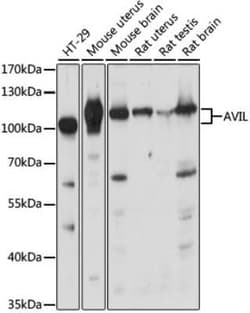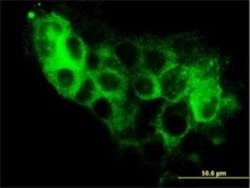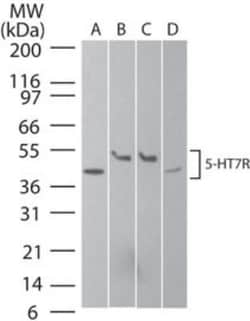UserName

Bio Techne
Bio-Techne es un desarrollador, fabricante y proveedor mundial de reactivos, instrumentos analíticos y diagnósticos de precisión de alta calidad. Tanto si se encuentra en la vanguardia de la investigación académica, traduciendo descubrimientos básicos en pistas terapéuticas, o en una instalación que requiere el más alto nivel de pruebas de diagnóstico, nuestras galardonadas herramientas y soluciones permiten a los científicos y médicos lograr resultados reproducibles y consistentes. Elegir Bio-Techne significa tener la confianza de que cada solución que utilice le ayudará a avanzar hacia mejores respuestas.
- Acerca de Bio Techne
- Anuncio
- Todos los productos
- Ofertas especiales
Categorías principales
Recursos relacionados

Optimizing Organoid Culture Conditions
Una nota de aplicación que demuestra el valor de las proteínas de R&D Systems™ para lograr condiciones de cultivo de organoides robustas y reproducibles.
- Nombre de archivo
- 23227_bio_techne_optimizing_organoids_Fisherised_v2.pdf
- Tamaño
- 1 MB
- Formato
- application/pdf

Realize Your Protein and Cell Potential
Desarrolle su potencial proteínico y celular
- Nombre de archivo
- 23227_bio_techne_realize_protein_Fisherised.pdf
- Tamaño
- 3 MB
- Formato
- application/pdf

Organ-on-a-Chip Technology
Progresos, retos y un futuro apasionante
- Nombre de archivo
- 23227_bio_techne_organ_on_a_chip_technology_progress_Fisherised.pdf
- Tamaño
- 326 KB
- Formato
- application/pdf
Fisher Scientific Europe anuncia un nuevo acuerdo de distribución con Bio-Techne en Europa
París, Francia 01-05-2024
Thermo Fisher Scientific, proveedor líder de productos y servicios de laboratorio, se complace en anunciar un hito importante en su compromiso de ofrecer soluciones de vanguardia a sus clientes. A partir del 1 de mayo de 2024, Thermo Fisher firmará un acuerdo estratégico de distribución en Europa con Bio-Techne (NASDAQ: TECH), una compañía global de ciencias de la vida que proporciona herramientas innovadoras y reactivos bioactivos para las comunidades de investigación y diagnóstico clínico.
Esta asociación marca una importante colaboración entre dos líderes de la industria en los campos de la investigación científica, el diagnóstico y la biotecnología. En virtud de este acuerdo, Thermo Fisher, a través del canal Fisher Scientific, Europa, distribuirá la amplia cartera de productos innovadores de Bio-Techne, que incluye anticuerpos, proteínas, kits de inmunoensayo, reactivos y enzimas a laboratorios e instituciones de investigación de toda Europa.
"We are thrilled to forge this partnership with Bio-Techne, a company renowned for its pioneering advancements in the life sciences industry," said Claire Wallace, President, Fisher Scientific channel, Europe. "By adding Bio-Techne's high-quality products to our comprehensive portfolio, we aim to further empower scientists and researchers with the tools they need to drive breakthrough discoveries and advancements in healthcare."
Bio-Techne's state-of-the-art products are designed to accelerate research and improve outcomes in areas including cell and gene therapy, immunology, neuroscience, and more. With this collaboration, Thermo Fisher reinforces its commitment to providing customers with access to the latest technologies and expertise, ultimately advancing scientific knowledge and improving human health.
«Estamos muy contentos de asociarnos con Thermo Fisher para ampliar el alcance de nuestros productos y servicios en toda Europa», dijo Kim Kelderman, Presidente y Director Ejecutivo de Bio-Techne. «Al aprovechar la amplia red de distribución europea y la experiencia en el sector del canal Fisher Scientific, pretendemos mejorar el apoyo a los investigadores y acelerar los descubrimientos científicos que abordan algunos de los retos más acuciantes de la atención sanitaria actual.»
Este acuerdo de distribución subraya la dedicación de Thermo Fisher a fomentar la innovación y la colaboración dentro de la comunidad científica. A través de asociaciones estratégicas con empresas líderes como Bio-Techne, Thermo Fisher continúa reforzando su posición como socio de confianza para investigadores y laboratorios de toda Europa.
Acerca de Bio-Techne
Bio-Techne Corporation (NASDAQ: TECH) es una empresa global de ciencias de la vida que proporciona herramientas innovadoras y reactivos bioactivos para las comunidades de investigación y diagnóstico clínico. Los productos de Bio-Techne contribuyen a la investigación científica de los procesos biológicos y de la naturaleza y evolución de determinadas enfermedades. Ayudan a descubrir fármacos y proporcionan los medios para realizar pruebas y diagnósticos clínicos precisos. Con miles de productos en su cartera, Bio-Techne generó más de 1.100 millones de dólares en ventas netas en el año fiscal 2023 y cuenta con aproximadamente 3.100 empleados en todo el mundo.
¿Preguntas? Póngase en contacto con un especialista >
| Primario o secundario | Primary |
|---|---|
| Formulación | Lyophilized from 25mM histidine, 8% sucrose, 0.01% Tween80 (pH6.2) |
| Método de purificación | Protein A purified |
| Inmunógeno | GAD65 |
| Formulario | Purified |
| Clon | U.Washington patent anti-GAD65 |
| Isotype | IgG1 |
| Especie del huésped | Human |
| Conjugado | Unconjugated |
| ID de gen (Entrez) | 2572 |
| Antígeno | GAD2/GAD65 |
| N.º de referencia del gen | Q05329 |
| Disciplina de investigación | Diabetes Research, Immune System Diseases, Immunology, Lipid and Metabolism, Neuronal Cell Markers, Neuroscience |
| Aplicaciones | Flow Cytometry,ELISA,Functional Assay |
| Reconstitución | Reconstitute with sterile, distilled water to a final concentration of 1 mg/mL. Gently shake to solubilize completely. Do not vortex. |
| Contenido y almacenamiento | Store at -20°C in powder form. Store at -80°C once reconstituted. |
| Alias de gen | EC 4.1.1, EC 4.1.1.15, GAD-65, GAD65MGC161605, glutamate decarboxylase 2, glutamate decarboxylase 2 (pancreatic islets and brain, 65kD), glutamate decarboxylase 2 (pancreatic islets and brain, 65kDa), Glutamate decarboxylase 65 kDa isoform, Glutamate decarboxylase-2 (pancreas), MGC161607,65 kDa glutamic acid decarboxylase |
| Especies diana | Human |
| Estado normativo | RUO |
| Clasificación | Monoclonal |
Factor VIII Antibody - BSA Free, Novus Biologicals™
Rabbit Polyclonal Antibody has been used in 4 publications
| Método de purificación | Affinity Purified |
|---|---|
| Inmunógeno | A synthetic peptide made to a C-terminal portion of human Factor VIII (between amino acids 2100-2250) [UniProt P00451] |
| Símbolos de los genes | F8 |
| Especies diana | Mouse,Rat |
| Estado normativo | RUO |
| Especie del huésped | Rabbit |
| Antígeno | Factor VIII |
| Aplicaciones | Western Blot,Immunofluorescence,Immunohistochemistry (Paraffin) |
| Primario o secundario | Primary |
|---|---|
| Formulación | PBS (pH 7.2) and 40% Glycerol with 0.02% Sodium Azide |
| Método de purificación | Affinity Purified |
| Inmunógeno | This antibody was developed against Recombinant Protein corresponding to amino acids:VRDECLLPCKDAPELGYAKESSSEQYVPDVFYKDVDKFGNEITQLARPLPVEYLIIDITTTFPKDPVYTFSISQNPFPIENRDVLGETQDFHSLATYLSQNTSSVFLDTISDFHLLLFLVTNE |
| Isotype | IgG |
| Símbolos de los genes | NPLOC4 |
| Especie del huésped | Rabbit |
| Conjugado | Unconjugated |
| ID de gen (Entrez) | 55666 |
| Antígeno | NPLOC4 |
| Aplicaciones | Western Blot,Immunohistochemistry,Immunocytochemistry,Immunofluorescence,Immunohistochemistry (Paraffin) |
| Contenido y almacenamiento | Store at 4C short term. Aliquot and store at -20C long term. Avoid freeze-thaw cycles. |
| Alias de gen | FLJ20657, FLJ23742, KIAA1499nuclear protein localization protein 4 homolog, NPL4Protein NPL4, nuclear protein localization 4 homolog (S. cerevisiae) |
| Especificidad de la prueba | Specificity of human NPLOC4 antibody verified on a Protein Array containing target protein plus 383 other non-specific proteins. |
| Especies diana | Human,Mouse,Rat |
| Estado normativo | RUO |
| Clasificación | Polyclonal |
PGC1 alpha Antibody - BSA Free, Novus Biologicals™
Rabbit Polyclonal Antibody has been used in 156 publications
| Primario o secundario | Primary |
|---|---|
| Formulación | PBS with 0.02% Sodium Azide |
| Método de purificación | Affinity Purified |
| Concentración | 1.0 mg/mL |
| Peso molecular del antígeno | 91 kDa |
| Inmunógeno | This PGC1 alpha Antibody was developed against a recombinant protein made to an internal portion of the human PGC-1 alpha protein (within residues 400-550). [Swiss-Prot# Q9UBK2]. |
| Dilución | Western Blot 1 - 2 ug/ml, Chromatin Immunoprecipitation reported by customer review, Flow Cytometry 1 - 2.5 ug/ml, Immunohistochemistry 1:10-1:500, Immunocytochemistry/Immunofluorescence 1:1000. Use reported in scientific literature (PMID 24508229), Immunoprecipitation reported in scientific literature (PMID 24769256), Immunohistochemistry-Paraffin 1:200, Immunohistochemistry-Frozen reported in scientific literature (PMID 25981953), Flow (Intracellular) 1 - 2.5 ug/ml, Chromatin Immunoprecipitation (ChIP), Knockout Validated, KnockDown Validated reported in scientific literature (PMID 35455432) |
| Isotype | IgG |
| Símbolos de los genes | PPARGC1A |
| Especie del huésped | Rabbit |
| Conjugado | Unconjugated |
| ID de gen (Entrez) | 10891 |
| Antígeno | PGC1 alpha |
| N.º de referencia del gen | Q9UBK2 |
| Disciplina de investigación | Cancer, Cholesterol Metabolism, Chromatin Research, Diabetes Research, Lipid and Metabolism, mTOR Pathway, Neuroscience, Transcription Factors and Regulators |
| Aplicaciones | Western Blot,ChIP Assay,Flow Cytometry,Immunohistochemistry,Immunocytochemistry,Immunoprecipitation |
| Contenido y almacenamiento | Store at 4C short term. Aliquot and store at -20C long term. Avoid freeze-thaw cycles. |
| Alias de gen | LEM6, Ligand effect modulator 6, ligand effect modulator-6, L-PGC-1alpha, peroxisome proliferative activated receptor, gamma, coactivator 1, alpha, peroxisome proliferator-activated receptor gamma coactivator 1 alpha transcript variant B4-3ext, peroxisome proliferator-activated receptor gamma coactivator 1 alpha transcript variant B4-8a, peroxisome proliferator-activated receptor gamma coactivator 1 alpha transcript variant B5-NT, peroxisome proliferator-activated receptor gamma coactivator 1-alpha, peroxisome proliferator-activated receptor gamma, coactivator 1 alpha, PGC1, PGC-1(alpha), PGC1A, PGC-1-alpha, PGC1APGC-1(alpha), PGC1peroxisome proliferative activated receptor, gamma, coactivator 1, PGC-1v, PPAR gamma coactivator variant form, PPAR gamma coactivator-1, PPARgamma coactivator 1alpha, PPAR-gamma coactivator 1-alpha, PPARGC1, PPARGC-1-alpha |
| Especificidad de la prueba | Human and Mouse. Squirrel reactivity reported in the scientific literature. Expected reactivity based on sequence identity: monkey (98%), equine (94%), canine (93%) and rat (88%). Rat reactivity reported in scientific literature (PMID: 22208735). |
| Especies diana | Human,Mouse,Rat,Pig,Goat,Hamster,Sheep,Squirrel |
| Estado normativo | RUO |
| Clasificación | Polyclonal |
Tyrosine Hydroxylase Antibody, Novus Biologicals™
Rabbit Polyclonal Antibody has been used in 147 publications
| Primario o secundario | Primary |
|---|---|
| Formulación | PBS with 50% glycerol, pH7.3. |
| Método de purificación | Affinity purified |
| Inmunógeno | Recombinant fusion protein containing a sequence corresponding to amino acids 470-819 of human AVIL (NP_006567.3). AAVQVRVRMGTEPRHFMAIFKGKLVIFEGGTSRKGNAEPDPPVRLFQIHGNDKSNTKAVEVPAFASSLNSNDVFLLRTQAEHYLWYGKGSSGDERAMAKELASLLCDGSENTVAEGQEPAEFWDLLGGKTPYANDKRLQQEILDVQSRLFECSNKTGQFVVTEITDFTQDDLNPTDVMLLDTWDQVFLWIGAEANATEKESALATAQQYLHTHPSGRDPDTPILIIKQGFEPPIFTGWFLAWDPNIWSAGKTYEQLKEELGDAAAIMRITADMKNATLSLNSNDSEPKYYPIAVLLKNQNQELPEDVNPAKKENYLSEQDFVSVFGITRGQFAALPGWKQLQMKKEKGLF |
| Dilución | Western Blot 1:500-1:2000, Immunocytochemistry/ Immunofluorescence 1:50-1:200 |
| Formulario | Purified |
| Isotype | IgG |
| Especie del huésped | Rabbit |
| Conjugado | Unconjugated |
| ID de gen (Entrez) | 10677 |
| Antígeno | Advillin |
| Disciplina de investigación | Neuroscience |
| Aplicaciones | Western Blot,Immunofluorescence |
| Contenido y almacenamiento | Store at -20°C. Avoid freeze-thaw cycles. |
| Alias de gen | ADVIL, advillin, DOC6, FLJ12386, MGC133244, p92DKFZp779O1812 |
| Especies diana | Human,Mouse,Rat |
| Estado normativo | RUO |
| Clasificación | Polyclonal |
LC3B Antibody - BSA Free, Novus Biologicals™
Rabbit Polyclonal Antibody has been used in 1218 publications
| Método de purificación | Affinity Purified |
|---|---|
| Inmunógeno | Polyclonal LC3B Antibody was made to a synthetic peptide made to an N-terminal portion of the human LC3B protein sequence (between residues 1-100). [UniProt# Q9GZQ8] |
| Dilución | Western Blot 0.5 - 2.0 ug/mL, Simple Western 1:50, Flow Cytometry, ELISA, Immunohistochemistry 1:200 - 1:400, Immunocytochemistry/Immunofluorescence 1:200, Immunoprecipitation 20 ug/500 ug of protein, Immunohistochemistry-Paraffin 1:200 - 1:400, Immunohistochemistry-Frozen, Immunoblotting, Proximity Ligation Assay, SDS-Page, Chromatin Immunoprecipitation (ChIP), Knockout Validated, KnockDown Validated |
| Contenido y almacenamiento | Store at -20°C. |
| Isotype | IgG |
| Símbolos de los genes | MAP1LC3B |
| Especies diana | Pig,Avian,Bacteria,Bovine,Primate,Rabbit,Zebrafish |
| Especie del huésped | Rabbit |
| Primario o secundario | Primary |
|---|---|
| Formulación | PBS with 0.05% Sodium Azide |
| Método de purificación | Protein G purified |
| Concentración | 1.0 mg/mL |
| Peso molecular del antígeno | 54 kDa |
| Inmunógeno | This antibody was developed by immunizing rabbits with a mixture of synthetic peptides corresponding to amino acids 13-28 of the rat 5-HT7R (AAA42134.1). |
| Dilución | Western Blot 1-2 ug/ml, Simple Western, Flow Cytometry reported in scientific literature (PMID 30602786), Immunocytochemistry/Immunofluorescence 1:10-1:2000. Use reported in scientific literature (PMID 17940054) |
| Formulario | Purified |
| Isotype | IgG |
| Símbolos de los genes | HTR7 |
| Especie del huésped | Rabbit |
| Conjugado | Unconjugated |
| ID de gen (Entrez) | 3363 |
| Antígeno | 5-HT7 |
| N.º de referencia del gen | P32305 |
| Disciplina de investigación | GPCR, Neuronal Cell Markers, Neuroscience, Neurotransmission |
| Aplicaciones | Western Blot,Flow Cytometry,Immunocytochemistry,Immunofluorescence |
| Contenido y almacenamiento | Store at 4C short term. Aliquot and store at -20C long term. Avoid freeze-thaw cycles. |
| Alias de gen | 5-HT-7, 5-HT75-hydroxytryptamine receptor 7, 5-HT-X, 5-hydroxytryptamine (serotonin) receptor 7 (adenylate cyclase-coupled), serotonin 5-HT-7 receptor, Serotonin receptor 7 |
| Especificidad de la prueba | The 5HT7 antibody recognizes all described 5HT7 receptor splice variants. |
| Especies diana | Human,Mouse,Rat,Canine |
| Estado normativo | RUO |
| Clasificación | Polyclonal |
Bio Techne

Genómica Powerhouse
Potencie sus procesos desde la PCR hasta la secuenciación.
















![BATF3 Antibody (841702) [DyLight 405], Novus Biologicals™](https://assets.fishersci.com/TFS-Assets/CCG/Novus-Biologicals/antibodies/Product-Image-DyLight-405.jpg-250.jpg)





